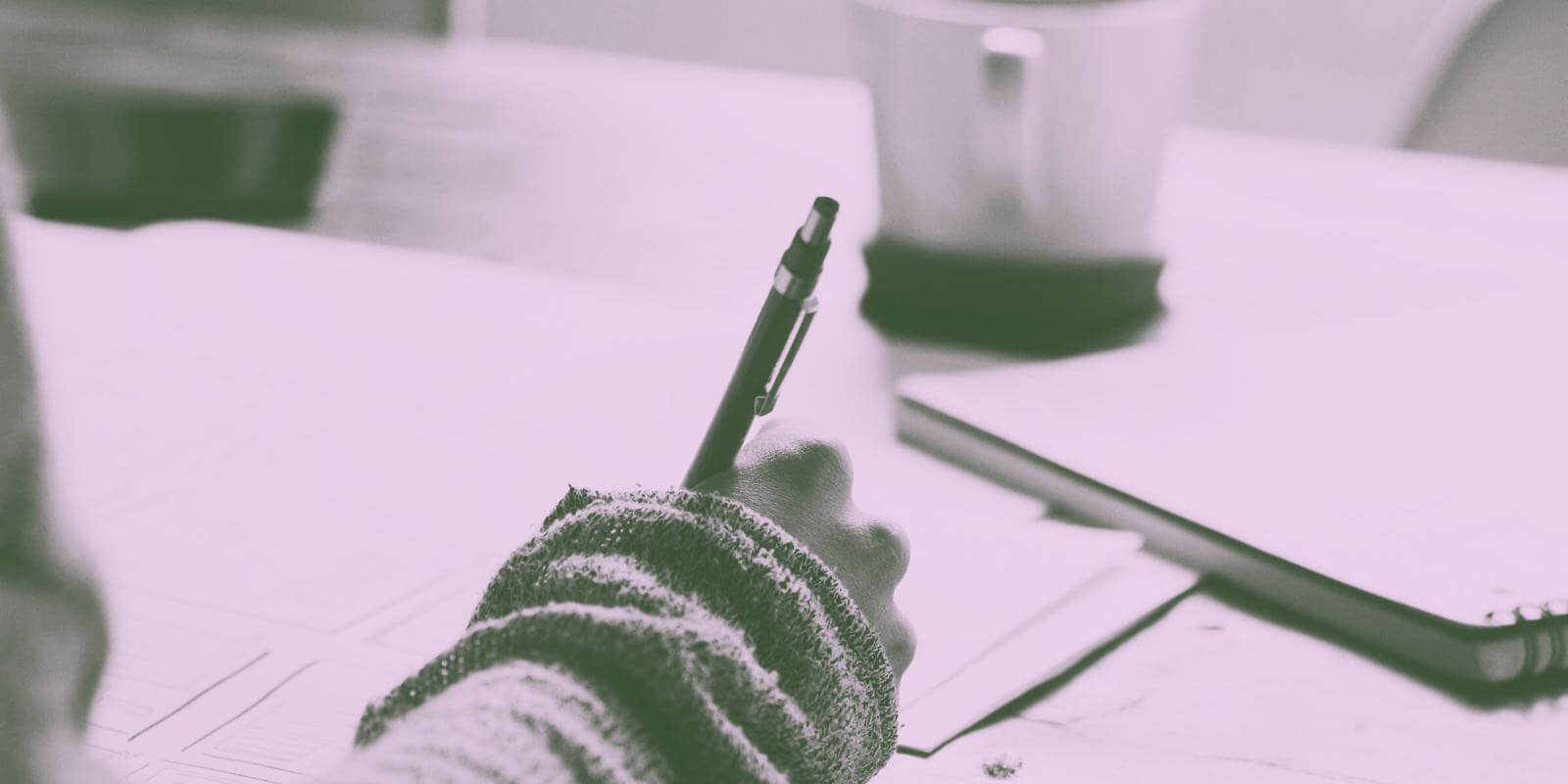Often our own mind can be the biggest source of distractions when we sit down to work:
- We suddenly remember the bananas we forgot to pick up at the grocery store.
- We begin worrying about the presentation we have to give next week.
- A sense of dread creeps over us when we realize how much work we still have to get done by the end of the day.
The Distractions List is a simple but powerful technique for dealing with internal distractions like these. By immediately writing down our distracting thoughts, we signal to our minds that those distractions are acknowledged and will be taken care of if necessary.
I first came across this idea, by the way, in Chris Bailey’s book Hyperfocus.
How To Do It
Here’s how to implement the Distractions List:
- Whenever you sit down to do some meaningful work, keep a small notebook or pad of paper and pencil next to you.
- When you notice yourself distracted by a particular thought, feeling, or any other internal event, quickly jot it down and then re-focus your attention onto your work.
- When you’ve finished your work, briefly review your Distractions List: Take note of anything important on the list and make a brief plan for taking care of it (e.g.: Set a reminder in your phone to pick up bananas at 5:05 pm).
That’s it!
Why It Works
While the experience of worry and the anxiety it produces is uncomfortable, it often serves the purpose of increasing our memory. In other words, when our mind is afraid that we’ll forget about important things, it often throws those things at us (in the form of worry) as a kind of primitive memory aid.
(Side Note: In his excellent book, Getting Things Done, David Allen talks a lot about this memory function of worry and how to eliminate it with well-designed organizational systems.)
Imagine driving in the car and seeing a phone number you want to remember on a billboard. Ideally, you’d write the number down as a way to remember it. But you’re driving, so you have to resort to a more primitive technique—repeating the number over and over again.
Often this is what our mind is doing when it throws “distracting” things at us while we’re working. It’s afraid that we’ll forget something important, so it repeats it over and over again.
By keeping a Distractions List, you’re effectively reassuring your mind that you have a reliable system for remembering these important things.
And if you get in the habit of keeping a Distractions List, eventually your mind will really start to trust that you will remember important things. Consequently, it will feel less of a need to throw these distracting worries at you.
Good Places to Use a Distractions List
The Distractions List is useful whenever you’re doing any kind of sustained, meaningful work. I find it most useful in these three areas:
- Reading. Most mornings I sit down at my desk and try to read for at least half an hour. Because I only have a limited amount of time, I try to really make sure I don’t end up distracted. When I sit down to read, I put my phone in a drawer and take out a little notepad and pencil and put it next to me on the desk and use it as a Distractions List.
- Writing. I try to write every day. And writing—at least for me—can be a mentally and emotionally draining process. As a result, I often find myself stuck in the middle of a writing session, unsure of where to go or how to connect two ideas. In response, my mind often throws distracting thoughts at me. This is the perfect scenario for a Distractions List.
- Email. As much as possible, I try to batch process my email once or twice a day. Sometimes this goes quickly and easily, but other times it takes a lot longer than I imagined. When this happens, my mind tends to rev up its distraction throwing, so having a Distractions List close by is helpful.





9 Comments
Add YoursThe main source of distraction originates from boredom in the task. And in turn this boredom creeps-in as the task begins to seem complex and insurmountable. We all know that the answer to this is plain persistence.
So my query is: how do I cultivate and nurture persistence in my work?
It’s a great question, Munesh! Two thoughts: 1) cultivate boredom tolerance. Start small, but work up to increasingly long tolerance times whenever boredom arrives. Not dissimilar, I think, to increasing tolerance for, say, exercise. 2) Roll with the boredom (I wrote about this in Productive Procrastination — https://nickwignall.com/productive-procrastination/)
Wonderful idea.I am going to give it a try
Thanks, Sam!
Does anyone think that distracting thoughts in the with results of anxiety could stem from a form of OCD? I have a friend who is worried all the time. He saw a building burn down due to electrical wiring. He now has to unplug everything in his house before leaving. He is also fearful DAILY that someone is going to break into his house and steal his cat. Nothing else. Just the cat. So much so he will call his neighbor daily and ask if all is ok. If the neighbors is on vacation he will make time to leave work to go check. He allows it to control his daily life activities. Such as,not wanting to go anywhere after work, not vacation even for a couple days. It gives severe anxiety. Also, like picking out suntan lotion. There are only 3 kinds. It takes him 20 min to decide which one to get. It’s like he fixates on things
I think that’s definitely a possibility! Obsessions and the anxiety they produce can be profoundly distracting.
My boyfriend procrastinates based like even when I need something like a drink of water he will just figured around and forget about me all together even if it’s an emergency. Then he gets mad when i keep repeating what I need or even what he needs.but i kindly repeat after a while goes by but he thinks I’m hounding him I don’t know what to do
That’s a tough situation, Rachel. Ultimately, there’s only so much we can do to influence other people.
You might find this article helpful, though: https://nickwignall.com/differential-reinforcement/
Very Good! I like!